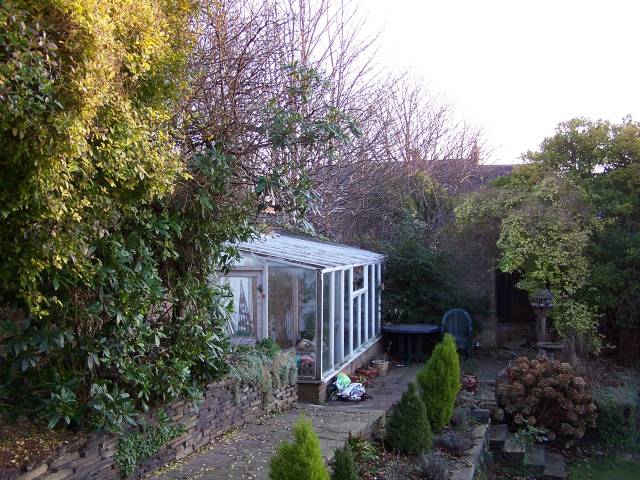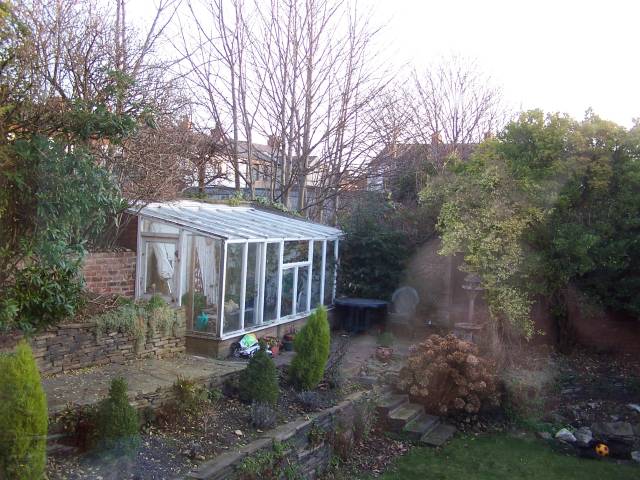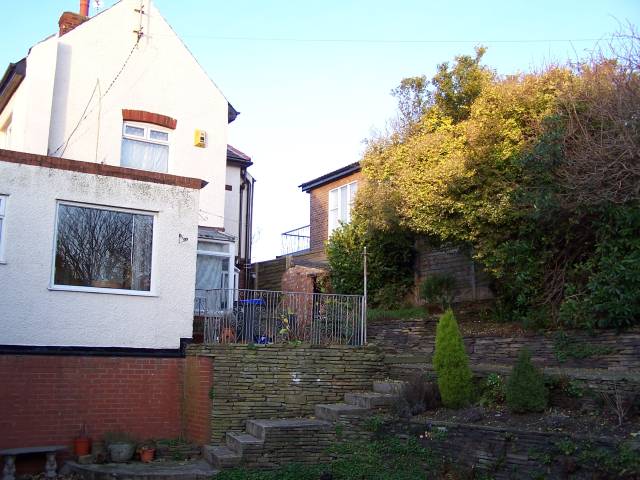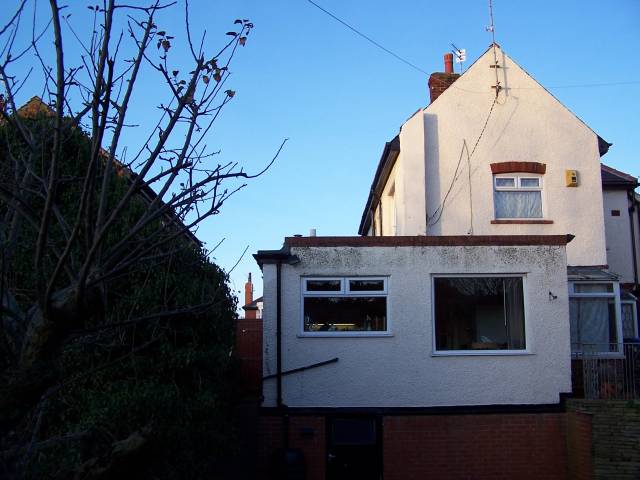The temp differences have settled down overnight which seems odd. Temps are now 16/17 (out/in) and humidity readings are now 61/57 (out/in).
They’re close enough now (bearing in mind the +/- 0.5deg accuracy).
The temp differences have settled down overnight which seems odd. Temps are now 16/17 (out/in) and humidity readings are now 61/57 (out/in).
They’re close enough now (bearing in mind the +/- 0.5deg accuracy).
Some pictures (now that it’s light enough!)
Looking West, this puts the current sensor positions in context…
A) Anemometer
B) 2m/70cm vertical antenna
C) Rain Gauge
D) G5RV wire antenna

Looking North-East (two pics…one from inside which has some reflection from the glass)…


Looking South-East (difficult shot with the sun this morning)…

Looking North-West…

Looking South-West (rain gauge can just be seen on this)…

Last one. Looking West showing the rain gauge position better. The flat roof is about 12ft wide (East-West) and the gauge is probably about 12ft South from side wall of the house.

Having thought about this some more, I think if I ever want to add solar and/or UV sensors then I’ll have to mount it somewhere near the current rain gauge. Anywhere else won’t see enough of the sun. I assume it’s not possible to mount these sensors away from the ISS? That’s a little odd in a way, because they really need to be up above the roof, yet this isn’t really the ideal place to site a rain gauge or the T/H sensor.
Yes it is possible… but since the power output of the UV/solar sensors is very low they will transmit lower readings. I am very weary about sending my solar sensor up there… would a solution be to just increase the Wm offset% through weather display?
It’s a big issue here, as for places in basins… like Kawerau, Alexandra, reefton etc… That was a reason I didn’t send it up there on the pole above the roof… the variance would be far too much.
I wasn’t proposing roof mounting because the readings would be lower (I doubt if an extra 20ft would make a huge difference after the light has travelled through around 100 miles of the Earth’s atmophere). The reason for roof mounting is to ensure that they can see the sun as much as possible between sunrise and sunset. I thought the ideal place for mounting a rain gauge was in a reasonably large clearing in a group of trees…which is just the place you wouldn’t want to put a solar/UV sensor!
Well I’ve got my ISS 1.5m above ground on a pole, and even though there’s no real shade to speak of, I start to get low UV readings from after 3pm (sunset is around 6:40pm), so you might be fairly safe having them where your rain gauge currently is.
Just a thought on my part and could be absolutely wrong. But any site you look at has a bell curve for the graph.
I don’t think it matters how open the area is, as it is the angle the light hits the sensor unless of course it’s shielded by trees, buildings or whatever. When I was testing mine I could see on the graphs where the sensor had been pointed at the sun verses a level position. I think the only way you could get a true reading would to have a tracking device that kept the sensor pointed directly pointed at the sun at all times (like one of the star tracking telescopes) or a program that would calculate the solar energy based on the time and angle of the sun in relation to the sensor. But then again what the heck do I know.
–Dave
The bell curve is probably partly related to the inability of the sensors to operate well at low sun angles. However, even if you tracked the sun, you would still get a bell curve. Solar radiation, including UV, is greater at noon (approx) because that’s the time when it’s coming through the least atmosphere. In the morning and evening the radiation has to pass through a lot more atmosphere to reach you, so more of it is ‘lost’ on the way to the sensor. That’s why you get sunburn much quicker at noon than at 0800!
By using Stuart’s program you can see the expected max solar radiation vs the time which I assume takes that into account. So if the sensor was pointed directly at the sun and the expected max radiation was 10 and the sensor saw and read 10 because of no angle to the sensor it would being seeing 100% of the max radiation. The only time you would have less than the expected max would be due to clouds.
So in my feeble mind, on a perfectly clear day with a view from horizon to horizon and a sensor pointed directly at the sun you would never go below 100% thus no bell curve.
–Dave
I think Stuart’s program calculates the time of the maximum solar radiation for each day and the level of radiation expected at that time. The radiation either side of the maximum falls away to zero at sunrise/sunset.
This is shown in the data from an observatory like Mt Teide on Tenerife…http://www.iac.es/weather/otdata/rad_net.html
I’d bet their sensors aren’t pointed directly at the sun. I guess my point is if the max calculated radiation can be measured then no matter the value, even if .001, then 100% because your seeing the max that can be expected at that time.
Didn’t someone on here have a sensor made of 3 solar cells from a calculator because he was trying to get closer to the angle of the sun during the day? I think 180 solor sensors in an array would smooth out the curve greatly.
–Dave
You can extend the cable for the solar sensor, 30 - 40 feet is not a problem. I mounted mine on the (unused) chimney with the anemometer to get it in a clear position. Noise will add some inaccurancy but it should be acceptable relative to the accuracy of the measurement itself.
What shape do you think the daily solar plot would be if the sensor tracked the sun? Maybe I’m misunderstanding what you’re saying. It seems like you’re saying that on a clear day with a sensor tracking the sun you’d get a straight line rather than a curve? Experience suggests that’s not the case. On a sunny day stand in the sun at 0800, 1200 and 1600. You will feel much hotter in the sun at 1200 than at 0800 or 1600 because the solar radiation for the day is at it maximum (approx) at that time.
[quote author=daveq link=topic=13090.msg101228#msg101228 date=1134830910]
Just a thought on my part and could be absolutely wrong.
Right, you would get a different curve due to the changing attenuation through the atmosphere and then some other effects at really low angles.